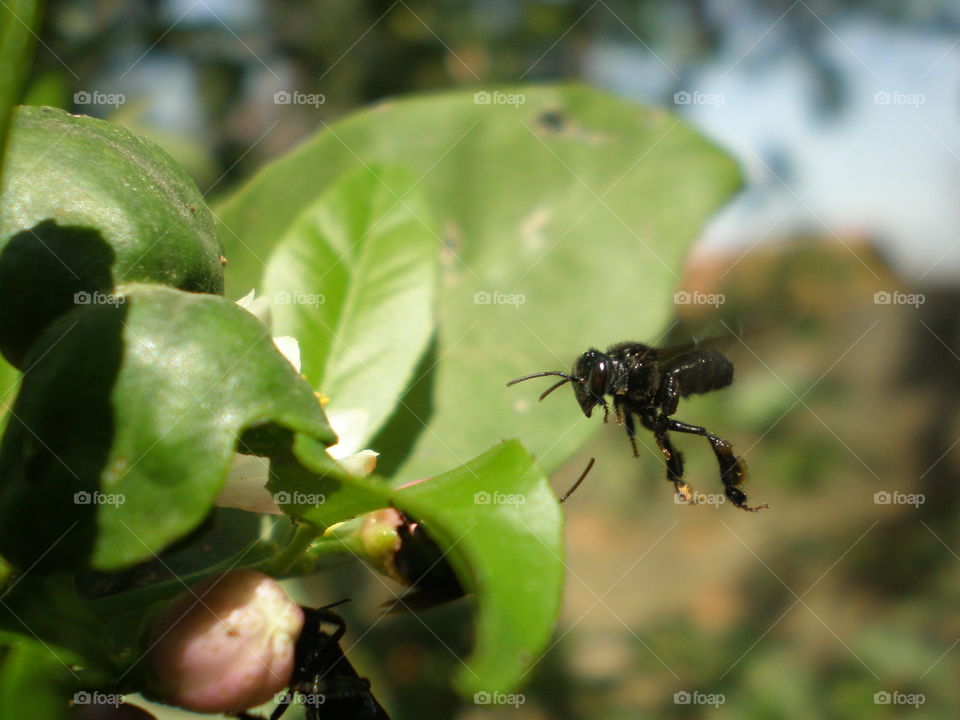Trigona spinipes is a species of stingless bee. It occurs in Brazil, where it is called arapuá, irapuá or abelha-cachorro ("dog-bee"). The species name means "spiny feet" in Latin. Trigona spinipes builds its nest on trees (or on buildings and other human structures), out of mud, resin, wax, and assorted debris, including dung. Therefore, its honey is not fit for consumption, even though it is reputed to be of good quality by itself, and is used in folk medicine. Colonies may have from 5,000 to over 100,000 workers.
Photo by bermudes
Royalties free, Commercial & Editorial use
$10.00


